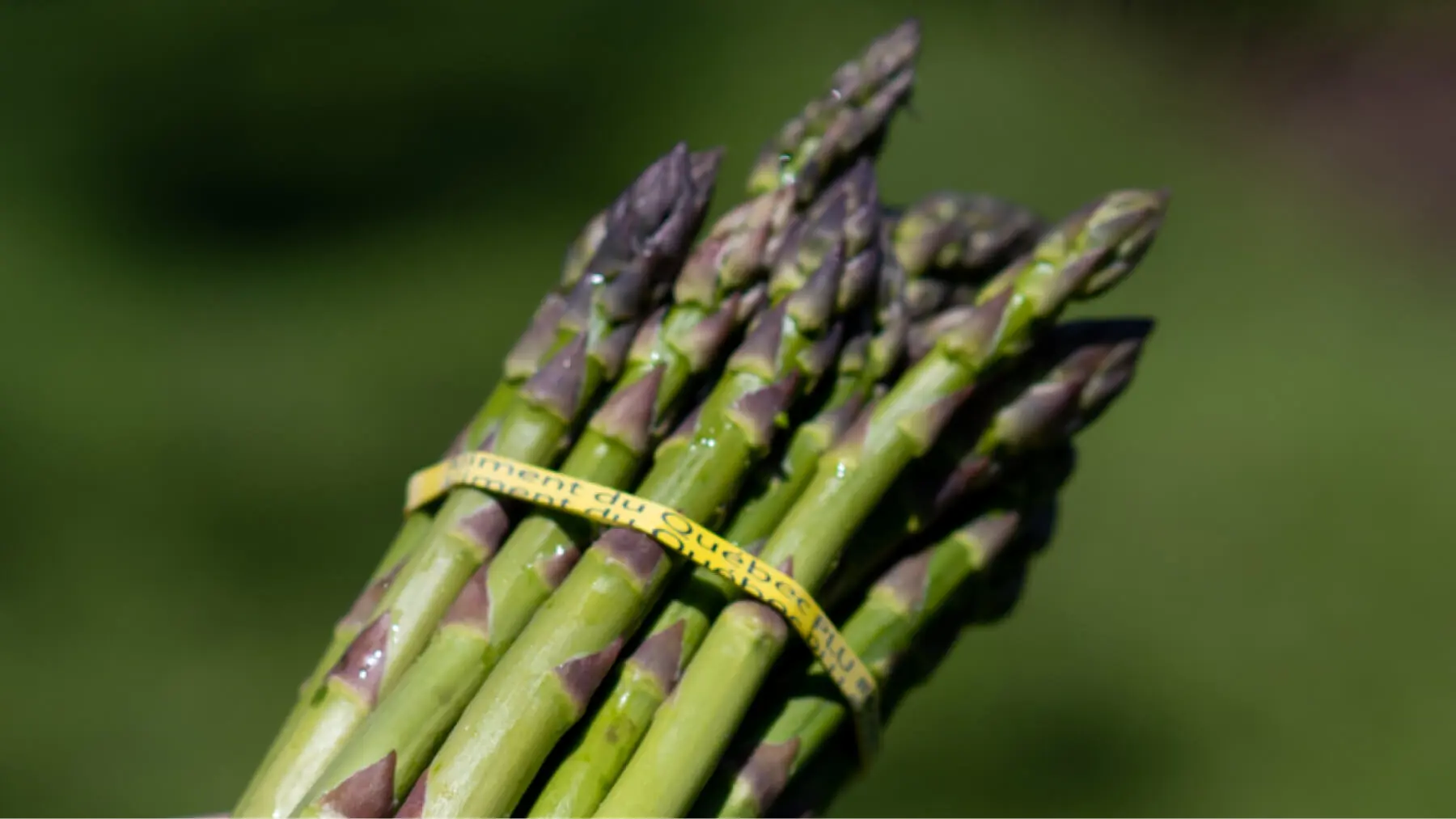We are passionate about growing Quebec green asparagus! Find out all about asparagus: its origins, nutritional values, buying and preserving tips, how we grow it at Les Cultures de chez nous and much more.
Origin of asparagus
Asparagus, from its Latin name Asparagus officinalis, is a distant cousin of the leek and the onion and a member of the Liliaceae family. Its history is as ancient as the leek since it has been consumed for over 2,000 years. Asparagus is a perennial vegetable that originated in Eastern Mediterranean countries, with traces of wild varieties found in Africa. Archaeologists also believe that it was cultivated in Egypt.
In ancient Greece, asparagus was considered a plant with sacred and aphrodisiac virtues. The Greeks were very interested in its biological and pharmacological qualities. Ancient Greek physician Hippocrates used asparagus to treat diarrhea and urethral pain. Asparagus contains asparagine, recognized for its diuretic qualities.
The Romans appreciated its gastronomic taste. They enjoyed it as an appetizer or a vegetable to accompany fish dishes. Asparagus fell into oblivion in the Middle Ages, although the Arabs continued cultivating it. It was mainly Caesar’s legions who brought asparagus back to Europe on their return from the Orient.
From the XVIth century, asparagus was served at the royal and princely courts of Europe. In the XVIIth century, asparagus was cultivated in France for Louis XIV, who is said to have been enamoured of it. According to the chronicles of the time, it was the size of a swan’s feather. Asparagus production was then limited to the needs of the nobility, and it was in the XVIIIth century that asparagus appeared on the popular market and in numerous culinary works.
Today, green asparagus is found in America and China, while white asparagus is mainly grown in Europe.
Asparagus nutritional values
Asparagus is an excellent source of minerals and folic acid (vitamin B9). It contains potassium, copper, calcium, iron and phosphorus. It is rich in insoluble dietary fibre and vitamins (A, B1, B2, B6 and C).
Asparagus contains asparagine, an acidic substance that gives it its distinctive flavour and is a diuretic. Asparagus contains relatively high proportions of compounds capable of stimulating renal elimination: fructosans (carbohydrates specific to certain plants) and asparagine beta (a monoacid derived from the amino acid aspartic acid). The high potassium/sodium ratio also helps promote diuresis. Asparagus has a definite diuretic effect, even with moderate consumption.
Asparagus is low in energy and high in nutritional density. Asparagus contributes to a balanced diet. It provides “safe” substances (with beneficial effects for preventing numerous pathologies) and is safe regarding excess calories. Of course, if you limit the use of sauces, which are higher in calories.
Asparagus fibres help keep the intestines in good working order: they regulate intestinal transit (thanks to water‑retaining pectins and mucilage, which are very well tolerated) while stimulating it (the cellulose in the stalk is particularly effective in combating intestinal sluggishness). Consumption of asparagus can remedy a tendency to constipation without risk of irritation to the intestinal mucosa.
Note that after high consumption of asparagus, urine may take on a particular odour. It is due to methyl mercaptan, a sulphur‑containing substance that breaks down and eliminates certain nitrogen compounds in asparagus.
To see the updated nutritional values table for asparagus and to find out its average composition, the amount of vitamins and minerals it contains, and its energy intake, consult the green asparagus nutritional data sheet from the Agency for research & information on fruit & vegetables (Agence pour la recherche et l’information en fruits et légumes ‑ Aprifel).
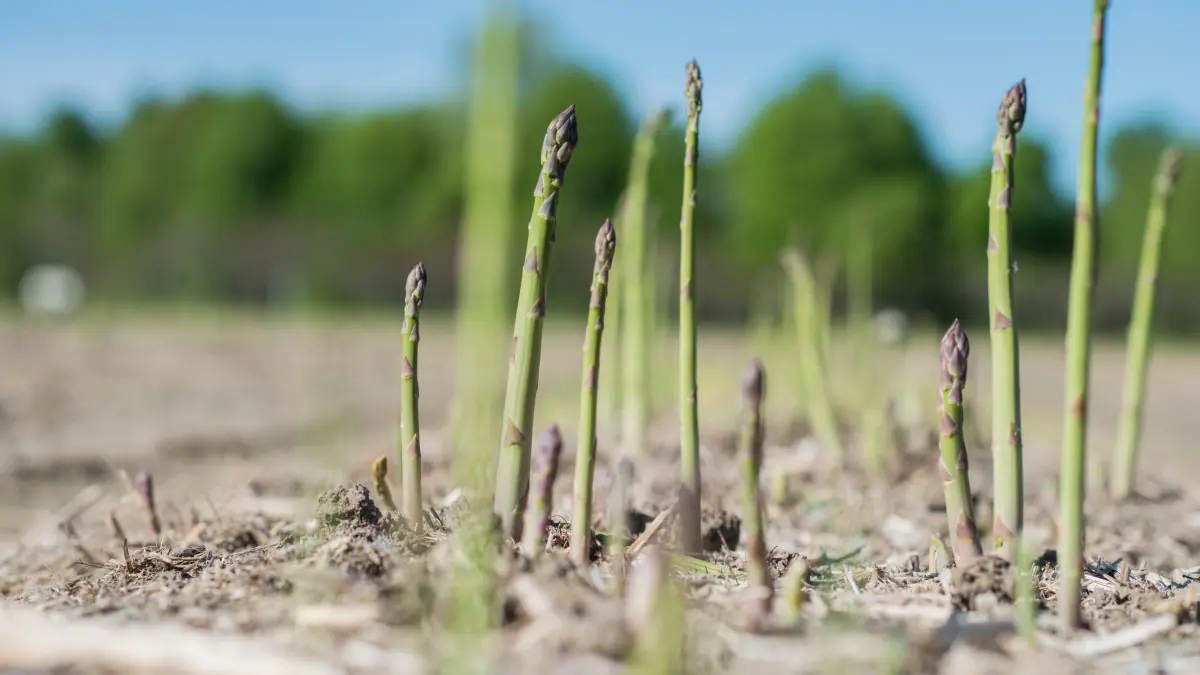
Buying, cleaning and preserving asparagus
When buying asparagus, choose ones with firm, brittle stalks. The heads should be brightly coloured and free from rust spots. We also recommend looking for asparagus of the same size, which will cook more evenly. Before cooking, cut the stalk at the base to remove the toughest, most fibrous part, then wash in cold water. Asparagus can be boiled, steamed or microwaved. They are cooked when tender and firm. They should be cooked appropriately, as they will soften and retain their flavour, colour and, above all, their nutritional values.
Asparagus is a fragile vegetable. They generally keep for 1 week in the refrigerator, in a damp cloth or perforated plastic bag.
For freezer storage, the best way is to blanch your asparagus by plunging it into boiling water for 3 to 4 minutes, then into iced water to stop the cooking process. Your asparagus will be a beautiful bright green! After drying, place in an airtight container or bag. You can keep blanched asparagus in the freezer for about 5 months.
In all grocery stores, you will find our Quebec asparagus (on a seasonal basis) sold by the pound. You can identify our asparagus by the yellow Aliments du Québec rubber band. We can also supply asparagus packed in a microporous bag. The bag prevents damage to the asparagus during handling, ensuring better hygiene and a longer shelf life. For formats available for sale and distribution, please consult our asparagus technical data sheet.
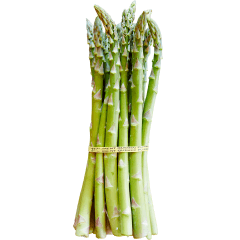

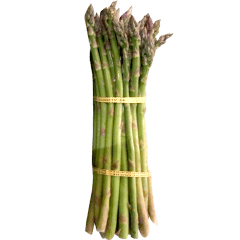
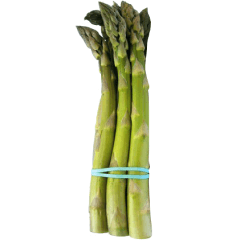

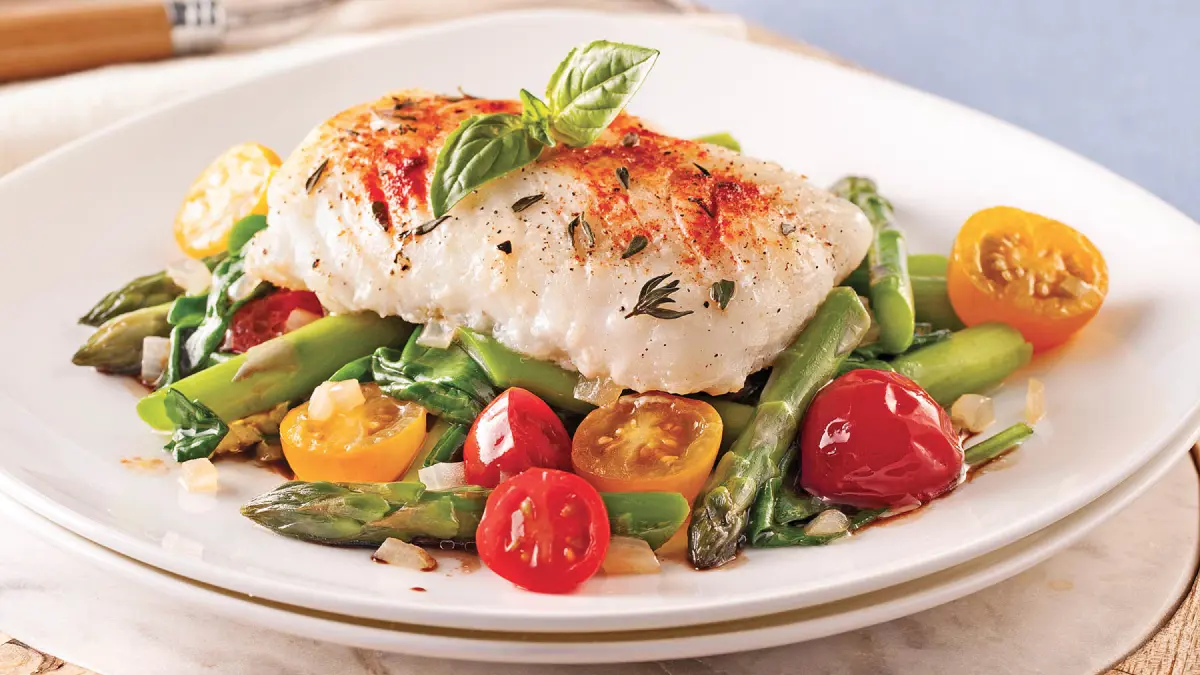
Asparagus growing
There are almost 300 species of asparagus, but only around twenty are edible. Asparagus comes in 3 main groups: green asparagus, white asparagus and purple asparagus. At Les Cultures de chez nous, we only grow green asparagus. We harvest about 100,000 pounds of Quebec asparagus from our fields in Sainte‑Brigitte‑des‑Saults each year. We also prepare and package around 1,000,000 pounds of asparagus from other Quebec producers for grocery stores. Before it reaches your plate, Quebec asparagus goes through a long process:
- The asparagus seed takes approximately 1 year to develop roots called claws. These are dug up and transplanted deeper into the soil after the first year. Our asparagus grove already has claws planted in sandy, well‑drained soil.
- After planting, the asparagus takes about 2 years to reach harvestable size. The older the plant, the longer it will take to harvest.
- Harvesting begins in mid‑May and lasts until the end of June. We harvest asparagus when they are about 15 centimetres long. In warm weather, asparagus grows so fast (10 cm daily) that we can harvest 2 times a day.
- In our on‑farm facilities, we clean, sort and prepare them for sale before delivering them to the various grocery stores in our refrigerated trucks.
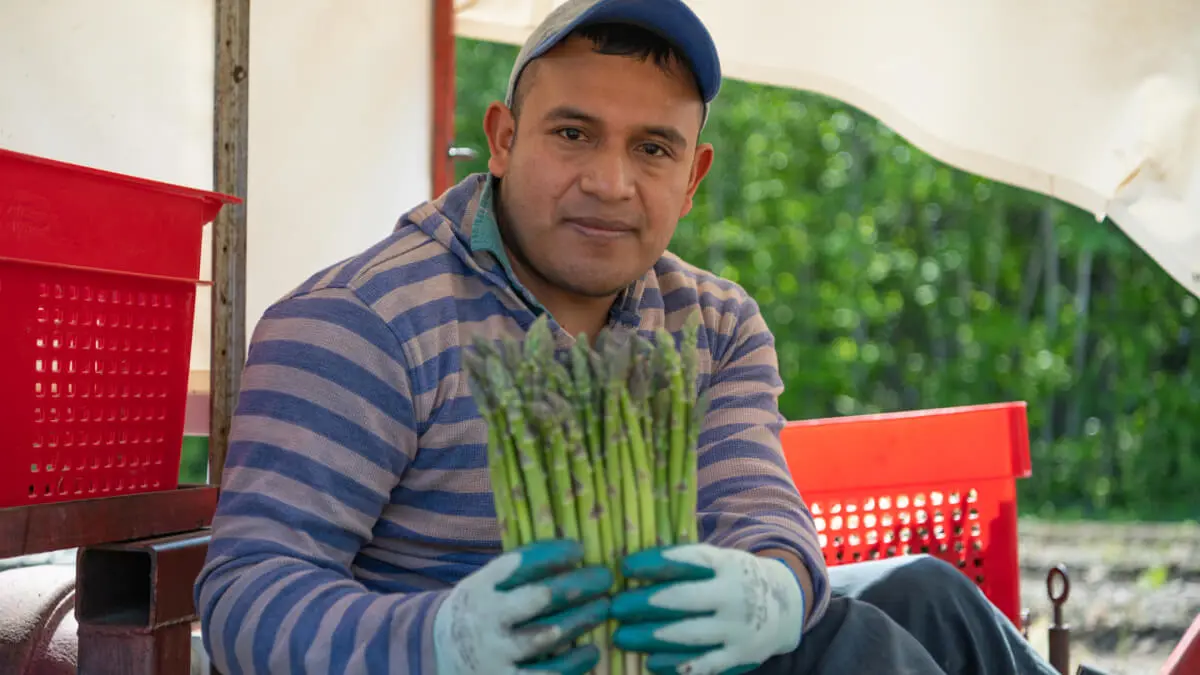

Where to find our products
Find out where to get our asparagus near you!
See where to find our products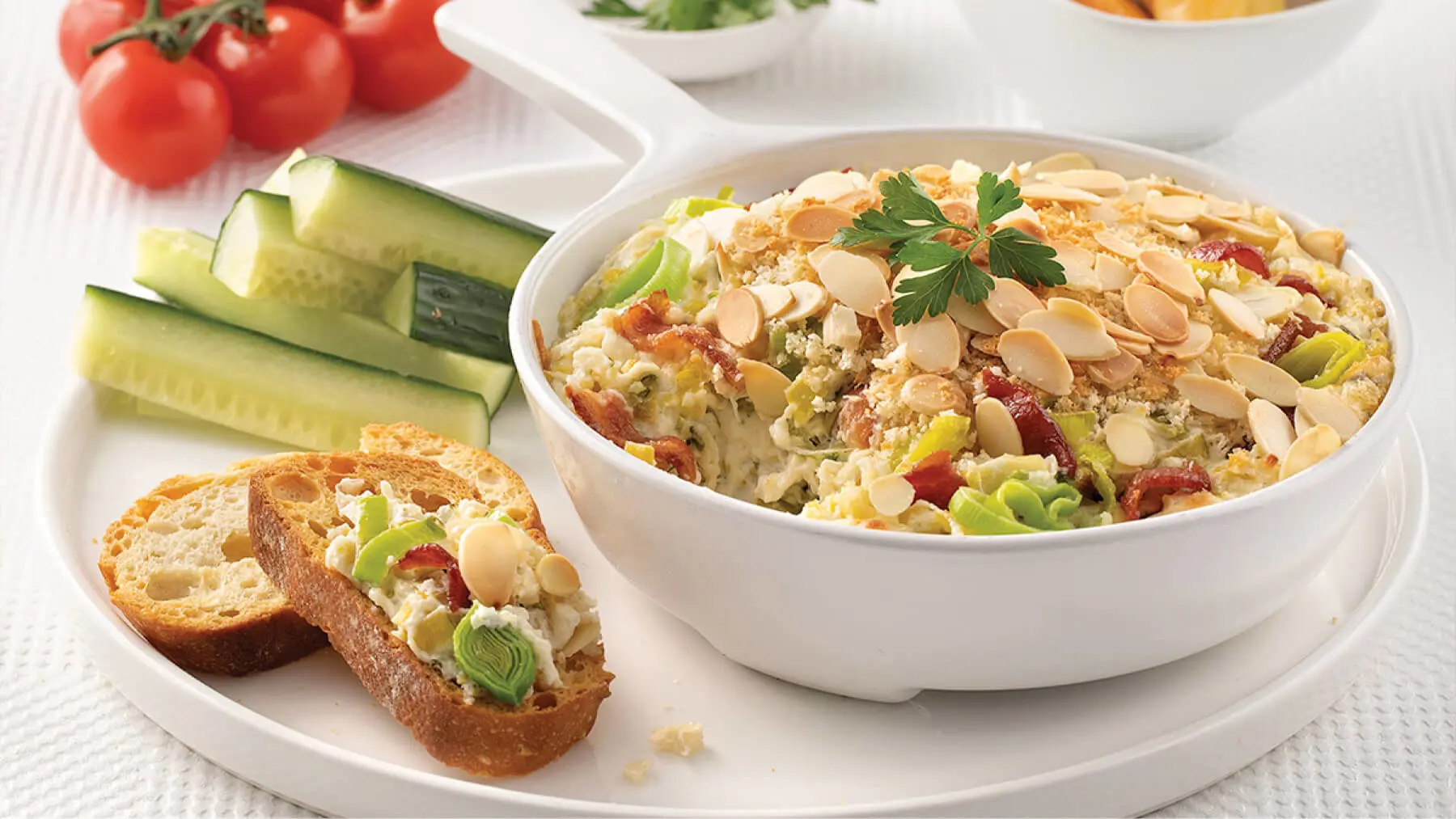
Asparagus recipes thanks to Crazy Leeks
Are you looking for inspiration to cook our asparagus? Crazy Leeks is here for you! We have created this website dedicated to recipes for asparagus and leeks, our specialty. You’ll also find plenty of recipes for the berries we grow. Whether you’re looking for green asparagus appetizers, asparagus au gratin side dishes, asparagus soups, brunch recipes or asparagus main courses, our recipes are there for you.
See our asparagus recipes